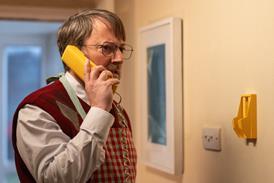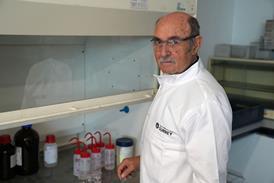Ask your average man or woman in the street how they would go about building an OB truck and you will probably draw a blank. The process is specialised, extremely technical and something of a mystery to most OB clients.
Mysterious it may be, but truck building is becoming one of the busiest areas of broadcast technology as OB firms realise that their future livelihood depends on investing in state of the art HD OBs.
Sony Professional Services' truck-building operation has completed five large trucks for the UK OB market in the past 18 months alone. Other OB truck builders and systems integrators (SIs) such as Megahertz, Telegenic and Gearhouse confirm that in the past two years business has been booming.
The sudden growth across the industry follows a quiet period of four or five years, according to Malcolm Robinson, business head of Sony's Professional Services OB division. Companies were waiting and gauging demand for HD services, but then the industry reached a point where older SD trucks needed upgrading, he explains. In addition, the proliferation of channels and platforms means more sport is televised, leading to increased demand for OB services - demand which has meant that Sony Professional Services has built 25 HD trucks to date across its international client base. Says Robinson, “Just over a year ago we began building fully HD trucks, where the heart of the vehicle - the router and switcher - was HD as well as the cameras and monitors as product manufacturers have caught up with demand.”
Procurement
When an OB company wants a new truck or an upgrade it has a number of choices. It can either source the truck and parts itself and put all the components together - although not all OB firms have the resources or skills needed to do this. Alternatively it can source the truck and parts and get a specialist SI to put it all together, or contract the whole job out.
According to Gearhouse Broadcast managing director Eamonn Dowdall the move to HD has meant more jobs are outsourced to SI in their entirety these days. “HD and 5.1 audio truck building is an extremely complex business and the integration is easier if an SI sources all the kit and then connects it. In the past organisations have been keen to control costs for each element of the truck by sourcing these themselves, but the complexity of HD has made this less of a priority.”
“This is partly because HD requires more precise systems integration work,” adds Dowdall. “Huge amounts of data are moved from place to place so cable distances are crucial, because HD pictures require a carefully constructed path.”
When specifying a truck the OB company or systems integrator's first step is always to ascertain what the truck is being used for in consultation with the client. Sony's Robinson says: “Trucks are a big investment and one trend is to make them as versatile as possible. To earn their keep most of the units we build are general purpose, as suited to football matches as they are to light entertainment.”
Space saving
The work that a truck is expected to do will determine how it is kitted out, for example a unit designed for sport will require plenty of EVS editing capability, whereas an OB designed specifically for opera might focus on extra audio desks. Once the specification has been decided the SI will begin designing the interior using CAD architectural design tools. Mike Spencer, founder of Telegenic, an OB outfit which does its own SI, says: “The trucks can expand to four times the size when in situ, but when they are on the road the contents must sit in place like a 3D jigsaw puzzle. CAD allows us to design a truck's layout with millimetre precision.”
Some recent advances such as the move from CRT to flat screen monitors has allowed that all important commodity - space - to be further optimised. Other space-saving innovations include back-to-back racks, which Telegenic created for its last two trucks.
Traditionally there was space for producers and engineers to walk between racks, but now the focus is on roomy production areas, resulting in other areas getting squeezed. Telegenic's latest truck, T16, has a production area that can house nine people with a VT area equipped for 13 operators.
Space saving has been an indirect benefit of the move from coaxial cable to fibre, as Megahertz managing director Greg Hoskin points out.
“Over the past 12 to 18 months we have fitted 10 trucks internally with audio fibre, reducing cabling by 90% and creating more space.”
Automation in truck building has advanced too. Although double and triple expanding trucks have been automated for years, now the process of levelling had been automated as well. Megahertz's Hoskin, whose latest truck levels automatically, says: “We are always looking for ways to advance the design.”
Gearhouse's Eamonn Dowdall adds another design consideration is the territory that the OB truck is destined for. “A production area of two to three layers of people seating 20 staff and upwards is common in the UK and the US, but in Germany and the Middle East there is less demand for such enormous trucks. It's largely because productions of sport in these countries are less sophisticated.”

























No comments yet